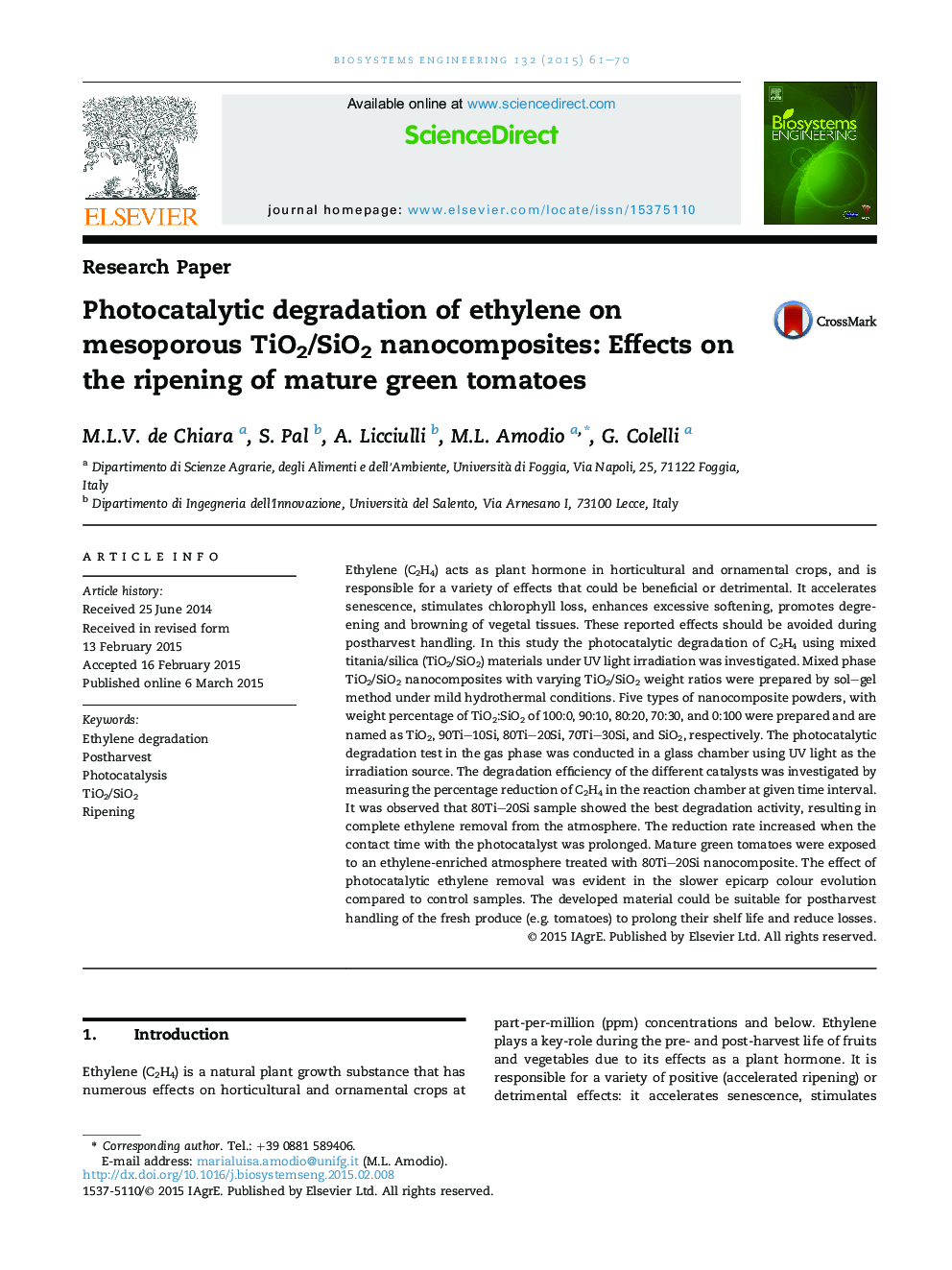| Article ID | Journal | Published Year | Pages | File Type |
|---|---|---|---|---|
| 1710968 | Biosystems Engineering | 2015 | 10 Pages |
•Titanium oxide acts as a photocatalyst to decompose ethylene under UV illumination.•Nanocomposites with TiO2/SiO2 100/0, 90/10, 80/20, 70/30 & 0/100% were studied.•SiO2 adsorption activity enhanced the photocatalytic activity of nanocomposites.•TiO2/SiO2 80/20 completely destroying ethylene in closed system and bioassay.•Degreening of tomatoes was strongly influenced by presence of the photocatalyst.
Ethylene (C2H4) acts as plant hormone in horticultural and ornamental crops, and is responsible for a variety of effects that could be beneficial or detrimental. It accelerates senescence, stimulates chlorophyll loss, enhances excessive softening, promotes degreening and browning of vegetal tissues. These reported effects should be avoided during postharvest handling. In this study the photocatalytic degradation of C2H4 using mixed titania/silica (TiO2/SiO2) materials under UV light irradiation was investigated. Mixed phase TiO2/SiO2 nanocomposites with varying TiO2/SiO2 weight ratios were prepared by sol–gel method under mild hydrothermal conditions. Five types of nanocomposite powders, with weight percentage of TiO2:SiO2 of 100:0, 90:10, 80:20, 70:30, and 0:100 were prepared and are named as TiO2, 90Ti–10Si, 80Ti–20Si, 70Ti–30Si, and SiO2, respectively. The photocatalytic degradation test in the gas phase was conducted in a glass chamber using UV light as the irradiation source. The degradation efficiency of the different catalysts was investigated by measuring the percentage reduction of C2H4 in the reaction chamber at given time interval. It was observed that 80Ti–20Si sample showed the best degradation activity, resulting in complete ethylene removal from the atmosphere. The reduction rate increased when the contact time with the photocatalyst was prolonged. Mature green tomatoes were exposed to an ethylene-enriched atmosphere treated with 80Ti–20Si nanocomposite. The effect of photocatalytic ethylene removal was evident in the slower epicarp colour evolution compared to control samples. The developed material could be suitable for postharvest handling of the fresh produce (e.g. tomatoes) to prolong their shelf life and reduce losses.
Graphical abstractFigure optionsDownload full-size imageDownload as PowerPoint slide
